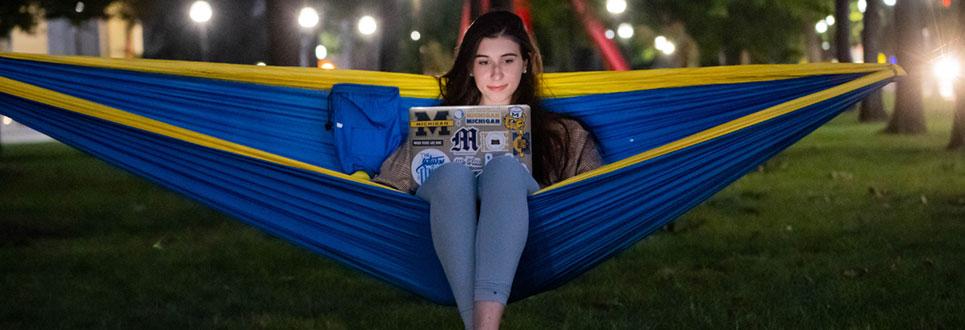2024-2025 FAFSA Changes


On Jan. 30, 2024, the Department of Education shared that they would delay sharing FAFSA data until March 2024, which means that many universities will be delayed in providing financial aid packages to incoming students and causing students to have a reduced amount of time to fully evaluate their colleges before the May 1 deadline. Learn more about U-M's deadline, extensions, and waivers.
Additional Information for incoming undergraduate students:
Additional information for returning undergraduate students:
Additional information for graduate and professional students:
As a result of the FAFSA Simplification Act, Federal Student Aid is updating the FAFSA process to expand access to federal student aid and provide an easier, streamlined FAFSA experience for students and families.
Watch this 2-minute overview video.
What is the FAFSA Simplification Act?
The FAFSA Simplification Act is a law that represents a significant overhaul of the processes and systems used to award federal student aid starting with the 2024–25 award year, including changes to the FAFSA. Learn more about the law.
Contact us at [email protected] if you have any additional questions. You can also find answers to your questions about the FAFSA in general on the Federal Student Aid website.
When will the 2024-25 FAFSA become available?
The U.S. Department of Education launched the FAFSA on Dec. 31, 2023.
What semesters are covered by my 2024-25 FAFSA?
Fall 2024, winter 2025, and spring/summer 2025
When is the 2024-25 Suggested Filing Date for UM-Ann Arbor?
Dec. 15, 2023. The suggested filing date is not a deadline. It is set to encourage new undergraduate students to complete their aid applications as soon as possible so that we can provide preliminary financial aid information sooner. We know the FAFSA was not available until after this date. The UM-Ann Arbor deadline to apply for aid is March 31, 2024.
When is the 2024-25 final financial aid deadline for UM-Ann Arbor?
March 31, 2024
Is a contributor required to have an FSA ID?
Yes, all contributors must have an FSA ID.
My parents are divorced or separated. Which parent is a contributor for my FAFSA?
The parent who provides the most financial support to the student should be the contributor on the FAFSA.
Do the invitations to contributors to provide federal tax information and consent expire?
Yes. Invitations to be a contributor will be deleted when they have been inactive for 45 days. Any previously entered information will be deleted and the process will need to start over.
How can I be considered an independent student?
An independent student is one of the following: born before Jan. 1, 2001, married (and not separated), a graduate or professional student, a veteran, a member of the armed forces, an orphan, a ward of the court, a person with legal dependents other than a spouse, an emancipated minor, a person who is unaccompanied and homeless or self-supporting and at risk of being homeless.
I’m a graduate student, how does this impact me?
U-M graduate student financial aid processing relies on the FAFSA. Therefore, incoming and current graduate student aid will need to be processed once the federal government provides information. This could result in a delay from March to April in graduate student aid processing.
I completed my 2024-25 FAFSA but U-M does not show that it has been received. Is there a problem?
Probably not. The U.S. Department of Education has alerted schools that there will be a delay in receiving FAFSA information. U-M may not be able to confirm receipt of your FAFSA until sometime in late March. We refer you to your studentaid.gov account and any confirmation emails received from Federal Student Aid to verify the status of your FAFSA application.
I’m a current undergraduate student, when will I receive my financial aid package?
Current U-M undergraduate students can submit the FAFSA at any time and are encouraged to do so by May 1. We anticipate access to the FAFSA data in enough time to provide financial aid packages for existing students on our regular schedule.
How do I correct missing or incorrect information on my FAFSA?
Please note that as of the beginning of April, Federal Student Aid has not yet made that ability available. They estimate aid applicants will be able to make required or voluntary corrections to 2024-2025 FAFSA information sometime in April.